
German postcard by Ross-Verlag, Berlin, no. 9103/1, 1935-1936. Photo: Maxim-Film.
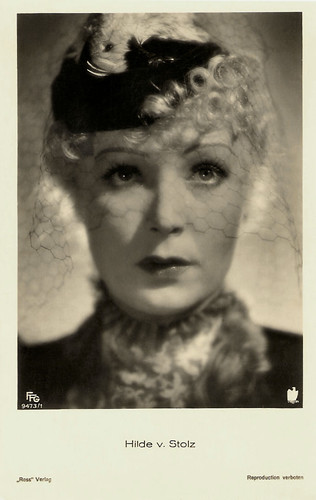
German postcard by Ross Verlag, Berlin, no. 9473/1, 1935-1936. Photo: FFG (Froelich-Film GmbH). Hilde von Stolz in Traumulus/The Dreamer (Carl Froelich, 1936).
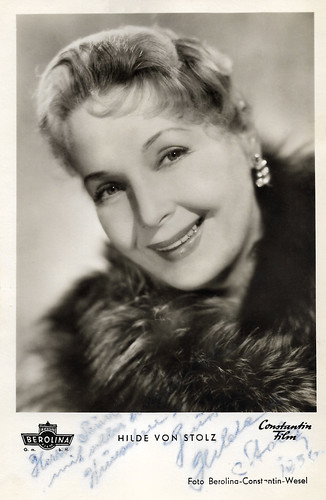
West German postcard by Kunst und Bild, Berlin, no. I 462. Photo: Berolina / Constantin / Wesel. Hilde von Stolz in Charley's Tante/Charley's Aunt (Hans Quest, 1955).
Ingénues, femmes fatales and elegant ladies
Hilde von Stolz was born Hilda Stolz in 1903 in Klausenburg/Schäßburg, Hungary, Austria-Hungary, now Cluj-Napoca, Romania. She was the daughter of an officer, but according to a surviving family tree, her father Karl Stolz was a "station chief".
Hilde was trained for acting at the Max-Reinhardt-Seminar in Vienna, against the wish of her parents. There she also made her theatre debut at the Kammerspiele, where she appeared as Wendla in Frank Wedekind's 'Frühlingserwachen' (Spring Awakening). She subsequently performed at various theatres in Vienna and later at the Theater am Schiffbauerdamm and Lustspielhaus des Westens in Berlin.
Her film debut was in the Austrian silent film Der Schulmeister vom Lichtenthal/The Melody Master (James A. FitzPatrick, 1928) under the pseudonym Helen Steels. The author and director of this film about the composer Franz Schubert, James A. FitzPatrick, was making portraits of artists at the time and later became famous for his travel documentaries. According to the magazine Filmwelt (1934), it was also FitzPatrick who suggested Hilde use the pseudonym "Helen Steels" because "Hilde von Stolz" was a "name impossible for film in America". The young actress probably dreamed of a career in Hollywood.
That same year, she moved to Berlin. In her first German film, she played the lead role opposite Reinhold Schünzel in the comedy Don Juan in der Mädchenschule/Don Juan in a Girls' School (Reinhold Schünzel, 1928). She used the pseudonym Helen Steels till 1933.
At the Ufa, she established herself as a major film actress although she had to be satisfied with major supporting roles in well-known films such as Zu neuen Ufern/To New Shores (Detlef Sierck, 1937) with Zarah Leander and Kleiner Mann - ganz gross!/Kleiner Mann - ganz groß!/Little man - big time! (Robert A. Stemmle, 1938). She was often cast as ingénues, femmes fatales, elegant ladies, dancers or actresses.
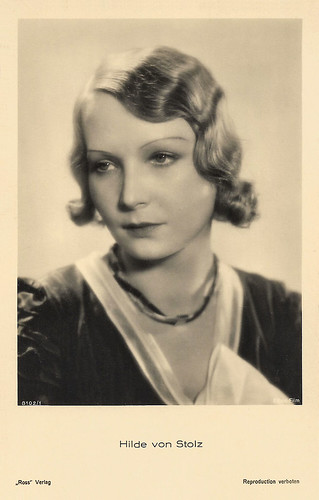
German postcard by Ross-Verlag, Berlin, no. 8102/1, 1933-1934. Photo: Ethos Film.
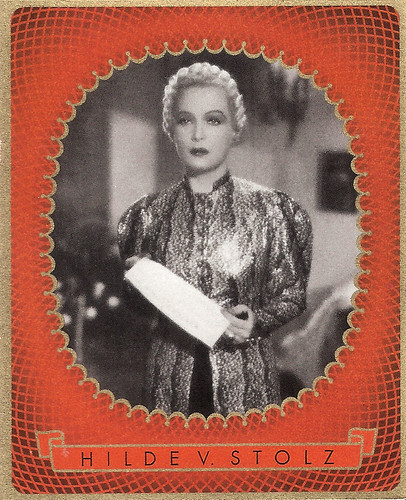
German collectors card for Caid in the Bunte Filmbilder series by Ross Verlag, series II, no. 394. Photo: Bavaria.

German cigarette card by Garbaty in the Moderne Schonheitsgalerie, Series 2, no. 188, issued in Kur Mark Cigarettes. Fritz Rasp and Hilde von Stolz in Lockspitzel Asew/Double-Agent Asew (Phil Jutzi, 1935).
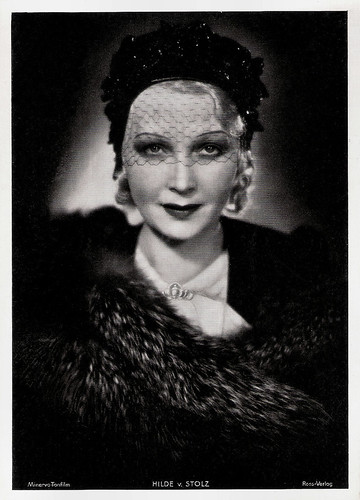
Big collectors card by Ross-Verlag, Berlin. Photo: Minerva-Tonfilm. Hilde von Stolz in Stärker als Paragraphen/Stronger Than Paragraphs (Jürgen von Alten, 1936).
Jud Süss
Hilde von Stolz followed the political events in Germany critically and finally helped Jews to leave Germany. When she decided to leave Germany herself the outbreak of World War II nullified her plans and she had to stay in Germany.
She continued her career during wartime and appeared among others as the wife of Duke Karl Alexander in the controversial propaganda film Jud Süss/Süss, the Jew (Veit Harlan, 1940) but also in films like the biopic Diesel (Gerhard Lamprecht, 1942) starring Willy Birgel and Münchhausen (Josef von Báky, 1942) starring Hans Albers.
Diesel portrays the life of Rudolf Diesel, the German inventor of the diesel engine. It was one of a series of prestigious biopics made in Nazi Germany portraying genius inventors or artists struggling against the societies in which they live.
After the war, she only appeared in a few more films. Her last films include the melodrama Ehe im Schatten/Marriage in the Shadows (Kurt Maetzig, 1947) released by DEFA, the comedy Charleys Tante/Charley's Aunt (Hans Quest, 1955) with Heinz Rühmann and Die Trapp-Familie/The Trapp Family (Wolfgang Liebeneiner, 1956) starring Ruth Leuwerik. Die Trapp-Familie became one of the most successful German films of the 1950s and was the inspiration for the even more fictionalised Broadway musical 'The Sound of Music' (1959), and its highly successful 1965 film version.
Her final screen appearance was in the TV movie Ein Mann Gottes/A man of God (Oswald Döpke, 1967). Hilde von Stolz died in 1973 in West Berlin, West Germany. She was buried in the family vault. Hilde von Stolz's private life is shrouded in mystery. There is no information about her relationships.
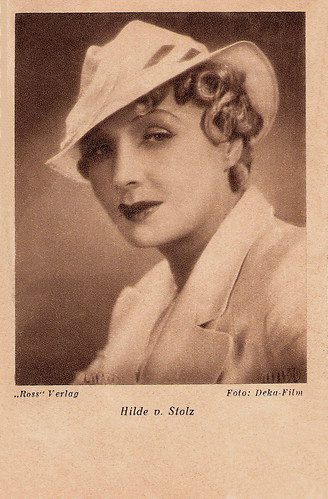
German postcard by Ross Verlag for Das Programm von Heute, Berlin. Photo: Deka-Film. This postcard was a gift by Miss Mertens.
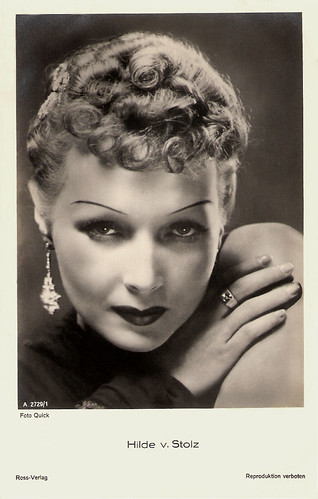
German postcard by Ross Verlag, no. A 2729/1, 1939-1940. Photo: Quick.

German postcard by Ross Verlag, no. A 3244/1, 1941-1944. Photo: Baumann / Ufa.
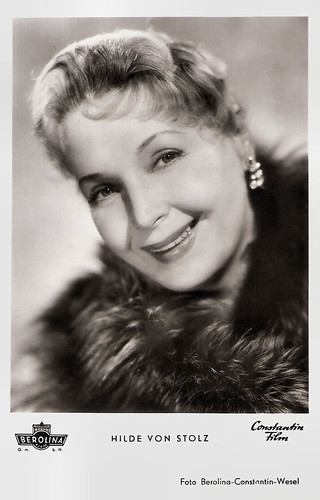
West German postcard by Kunst und Bild, Berlin, no. I 462. Photo: Berolina / Constantin / Wesel. Hilde von Stolz in Charley's Tante/Charley's Aunt (Hans Quest, 1955).
Sources: Johannes Ackner (RICHARD-ACKNER-ARCHIV - German), Wikipedia (English and German) and IMDb.
No comments:
Post a Comment